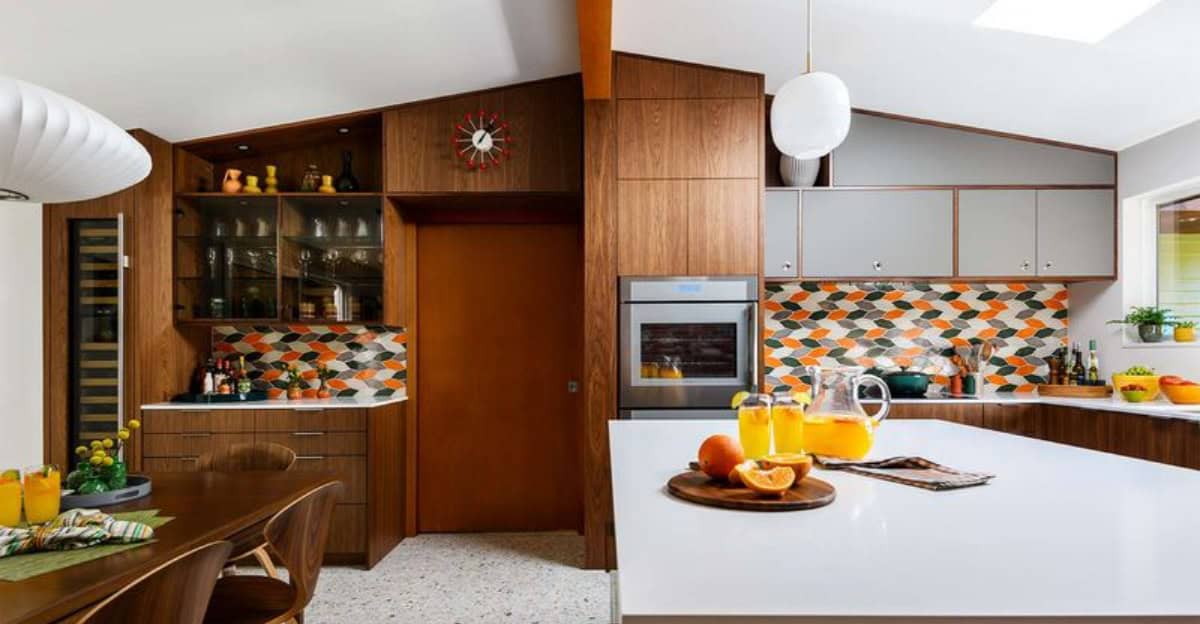Mid-century modern kitchens are a nostalgic journey back to an era characterized by simplicity, functionality, and flair.
These kitchens exude a timeless charm, blending form and function with a splash of color and design ingenuity.
Join me as we explore 10 iconic features from the mid-century modern kitchen that deserve a place in today’s homes, adding a touch of vintage elegance and practicality to our culinary spaces.
From sleek cabinetry to bold appliances, these elements not only enhance the aesthetic appeal but also promise to inspire creativity and warmth.
1. Bold Color Schemes

Mid-century kitchens were renowned for their bold use of color, creating lively and inviting spaces. Bright shades like teal, mustard, and orange were often paired with neutral tones to create striking contrasts.
These vibrant palettes brought energy and personality into the kitchen, making it a focal point of the home. Colorful appliances and accessories further enhanced the aesthetic, adding a playful touch.
Reviving these bold color schemes today can infuse your kitchen with a burst of creativity, turning cooking into a more enjoyable and visually stimulating experience.
2. Streamlined Cabinetry
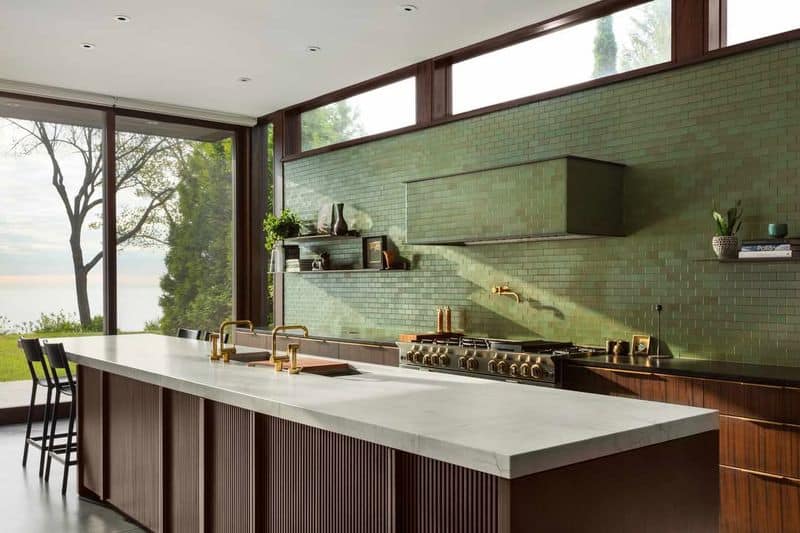
Streamlined cabinetry, characterized by clean lines and minimalist designs, was a hallmark of mid-century kitchens.
These cabinets offered both functionality and style, maximizing storage space while maintaining an uncluttered appearance.
The focus was on simplicity, with flat panels and subtle handles contributing to a neat and tidy aesthetic. Often made from rich woods or laminate, they added warmth and texture.
Incorporating streamlined cabinetry into modern kitchens can create a spacious and organized environment, allowing the beauty of simple design to shine, while offering ample storage for all kitchen essentials.
3. Geometric Tile Patterns
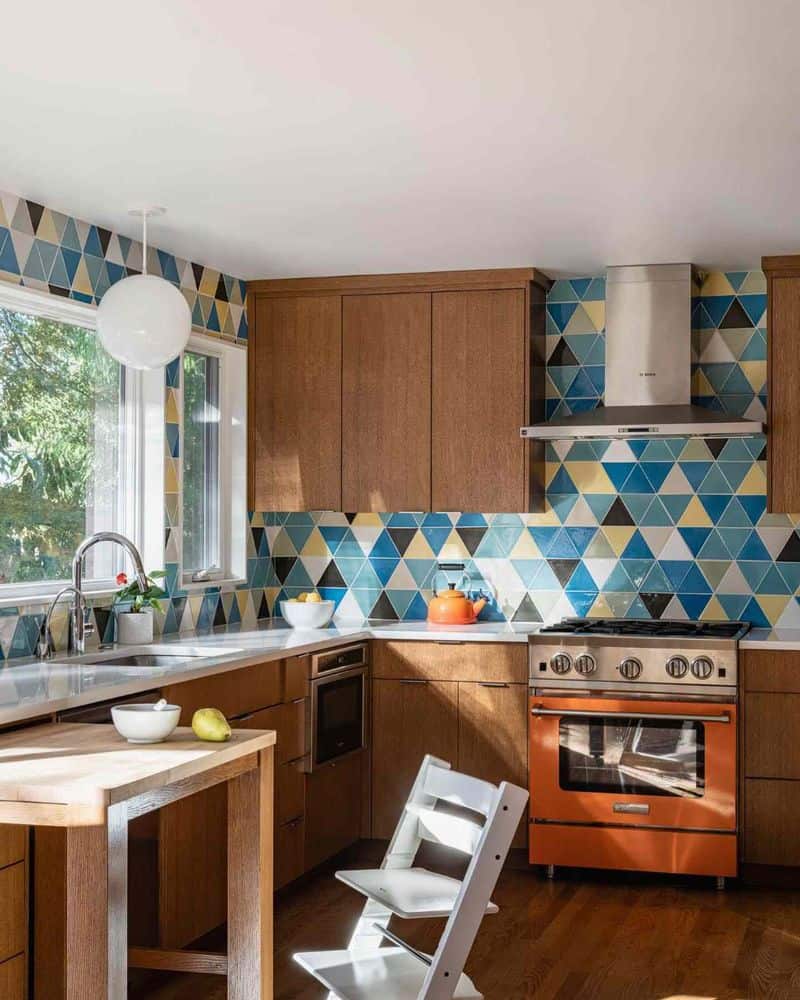
Geometric tile patterns were a popular choice in mid-century modern kitchens, bringing a sense of order and visual interest to floors and backsplashes.
These tiles featured bold, symmetrical designs, often in monochrome or limited color palettes.
The use of geometric patterns added depth and character to the kitchen, blending seamlessly with the overall aesthetic.
Incorporating geometric tiles into contemporary kitchens can provide a unique focal point, enhancing the room’s visual appeal and creating a harmonious balance between modern functionality and timeless design.
4. Retro Appliances
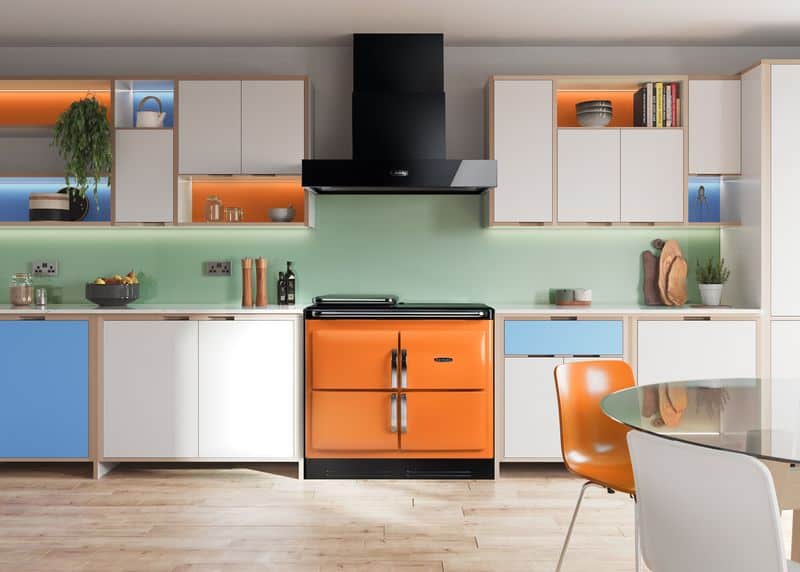
Retro appliances are a delightful nod to the past, combining nostalgic design with modern technology.
Mid-century kitchens often featured rounded fridges, pastel-colored ovens, and small appliances that added charm and personality.
These appliances were more than just functional; they were statement pieces that complemented the kitchen’s overall decor.
Bringing retro appliances into today’s kitchens can inject a sense of fun and individuality, allowing homeowners to enjoy the best of both worlds – vintage aesthetics with contemporary convenience – and create a kitchen that’s both stylish and efficient.
5. Pull-Out Cutting Boards
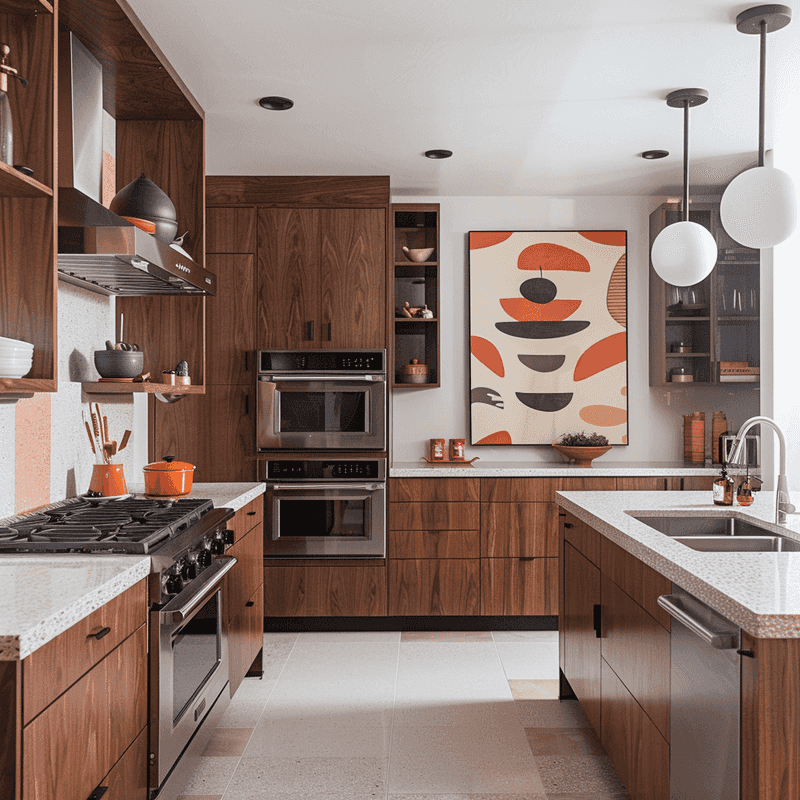
Pull-out cutting boards were a smart and functional feature in mid-century kitchens, offering additional workspace without sacrificing space.
These boards were cleverly integrated into the cabinetry, sliding out effortlessly when needed.
They provided a convenient solution for meal preparation, especially in smaller kitchens where every inch counted.
Today, incorporating pull-out cutting boards can enhance a kitchen’s functionality, offering a practical and space-saving option for food prep.
This simple yet effective feature embodies the mid-century ethos of blending form and function, making it a valuable addition to modern homes.
6. Breakfast Nooks
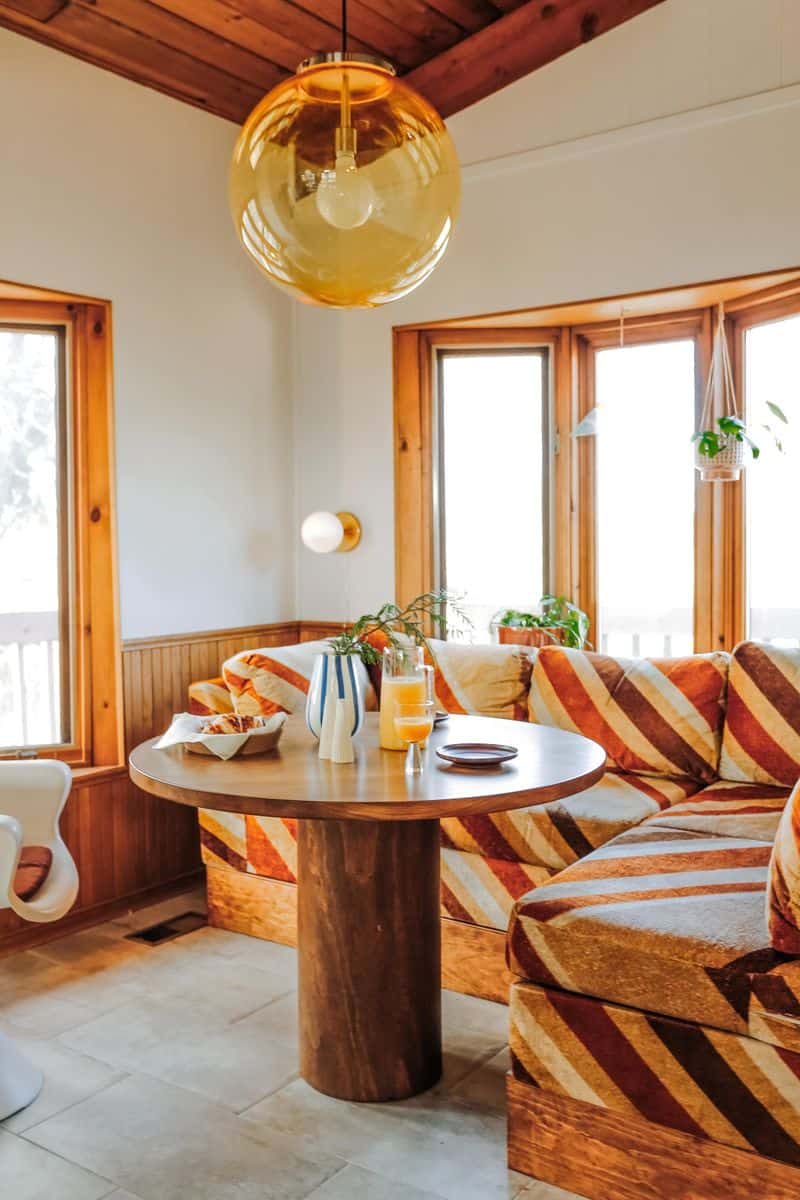
Breakfast nooks were a cozy and inviting feature of mid-century kitchens, providing a dedicated space for casual dining and conversation.
These nooks often featured built-in benches, round tables, and colorful cushions, creating a warm and intimate atmosphere.
They served as a versatile spot for family meals, homework, or morning coffee, maximizing small spaces with charm and utility.
Reviving the concept of breakfast nooks in today’s kitchens can offer a comforting retreat from the hustle and bustle, fostering connection and relaxation in a dedicated corner of the home.
7. Open Shelving
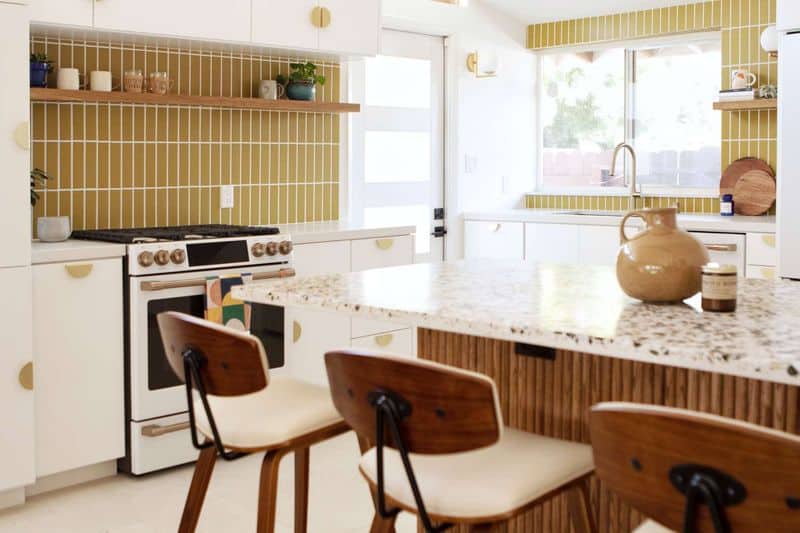
Open shelving was a distinctive feature in mid-century kitchens, providing both storage and display opportunities.
These shelves allowed homeowners to showcase colorful dishware and glassware, adding a personal touch to the kitchen decor.
The openness created an airy feel, making the kitchen appear larger and more inviting, while keeping essentials within easy reach.
Integrating open shelving into modern kitchens can enhance functionality and aesthetic appeal, offering a practical solution for organization and a chance to personalize the space with unique and beautiful items.
8. Formica Countertops
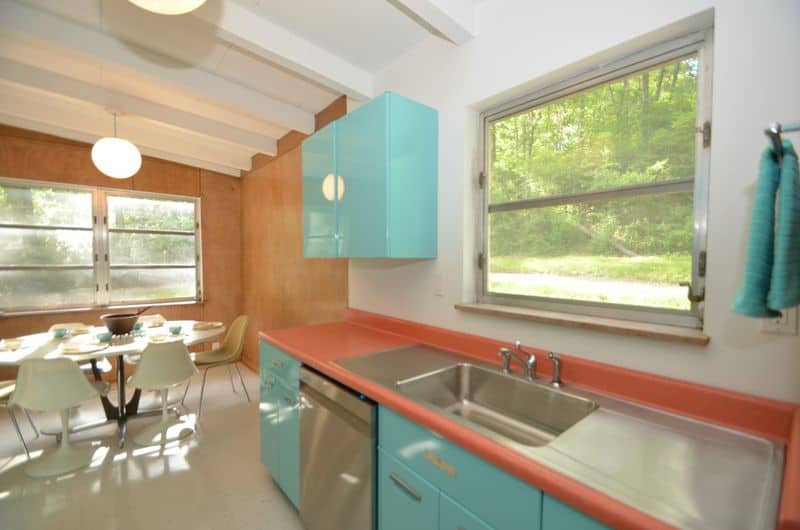
Formica countertops were a popular choice in mid-century kitchens, known for their durability and vibrant colors.
These surfaces were easy to clean and maintained their glossy appearance over time, making them a practical option for busy kitchens.
Available in a range of pastel hues, Formica countertops added a cheerful and modern touch to the kitchen design.
Bringing back Formica countertops can offer a stylish and durable solution for today’s kitchens, combining retro appeal with modern functionality.
Their easy maintenance and diverse color options make them a versatile choice for any home.
9. Pendant Lighting
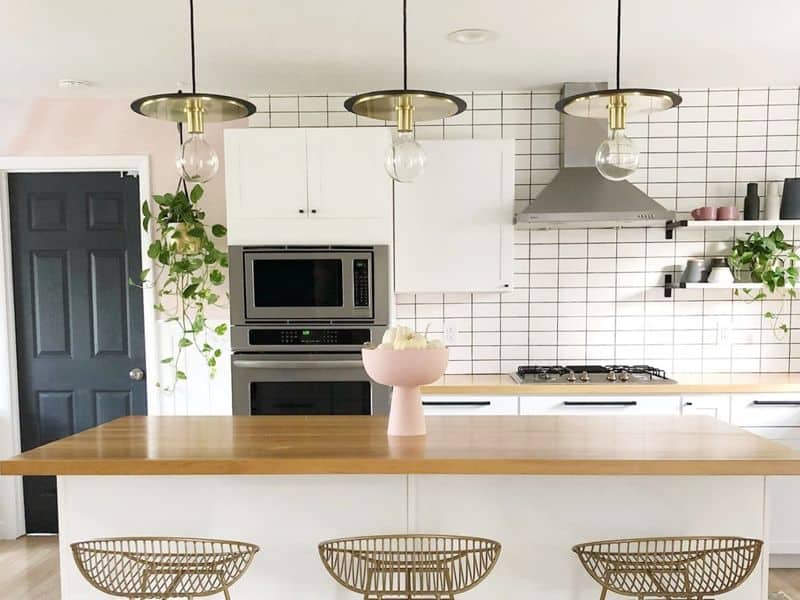
Pendant lighting was a key element in mid-century kitchen design, offering both functional and aesthetic benefits.
These lights were often strategically placed above kitchen islands or dining areas, providing focused illumination.
The sleek, stylish designs of mid-century pendant lights added visual interest and complemented the overall decor.
Incorporating pendant lighting today can enhance the ambiance and functionality of any kitchen, offering targeted lighting for tasks while contributing to the room’s design.
The timeless elegance of these fixtures continues to shine, proving that good design never goes out of style.
10. Built-In Banquettes
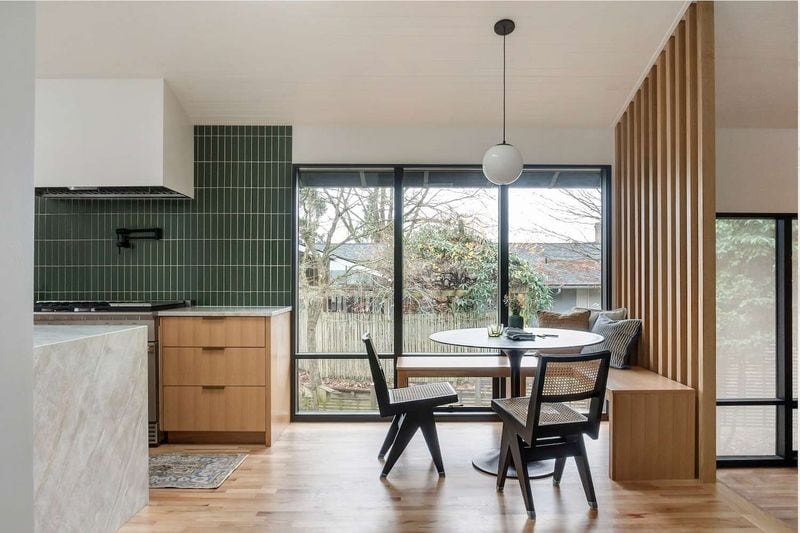
Built-in banquettes were a popular feature in mid-century kitchens, combining seating and storage in a functional design.
These fixtures provided a cozy seating area, often upholstered in colorful fabric, surrounding a dining table.
Banquettes maximized space, offering storage underneath the seating, perfect for small kitchens.
Incorporating built-in banquettes in modern kitchens can create a charming and efficient dining area, blending comfort with practicality.
This feature encourages social interaction and provides a versatile solution for small spaces, proving that mid-century design principles remain relevant and inspiring.

